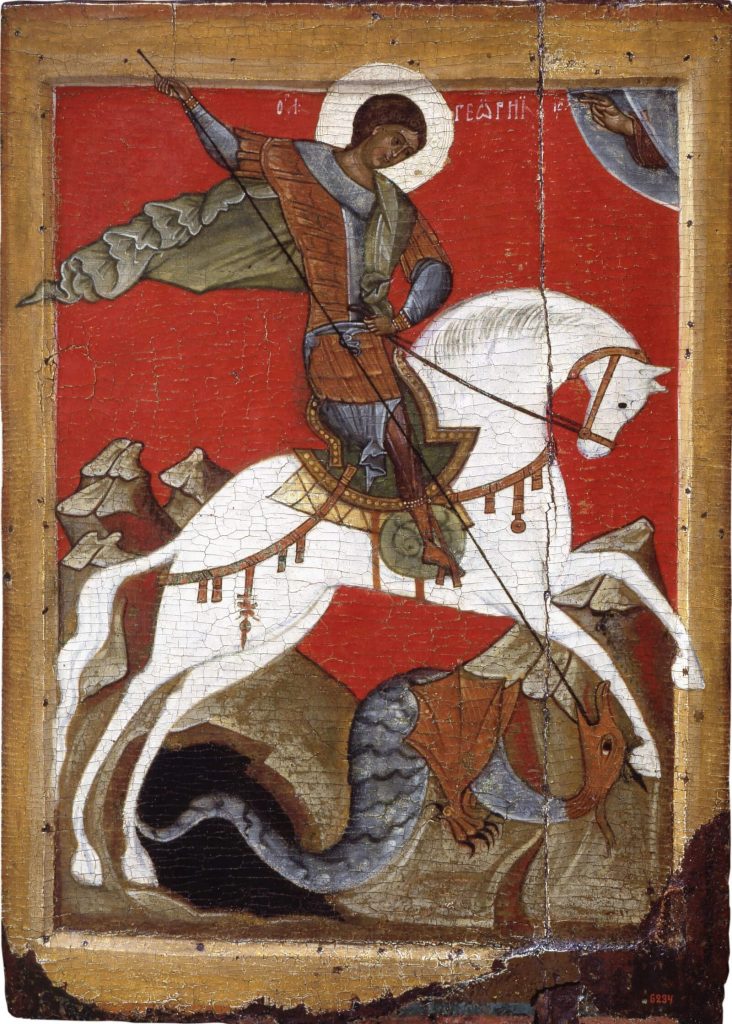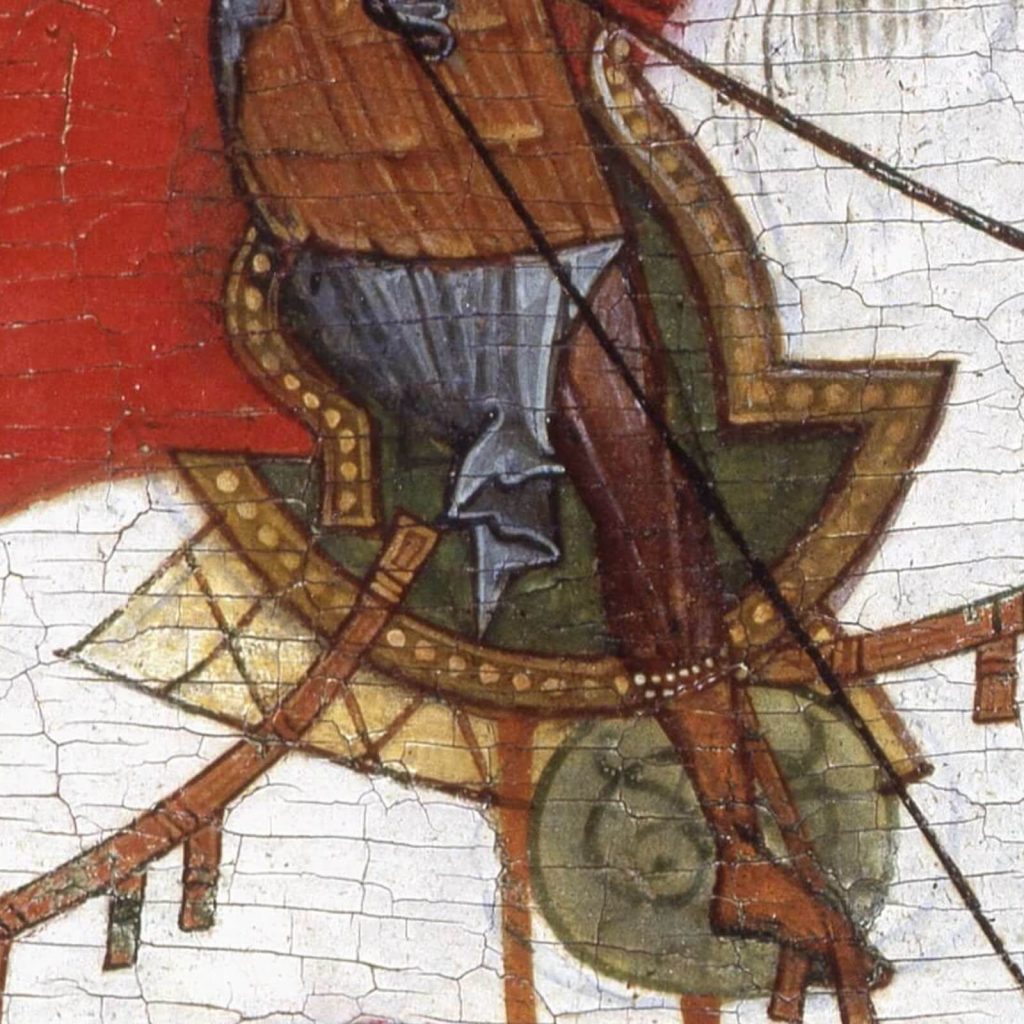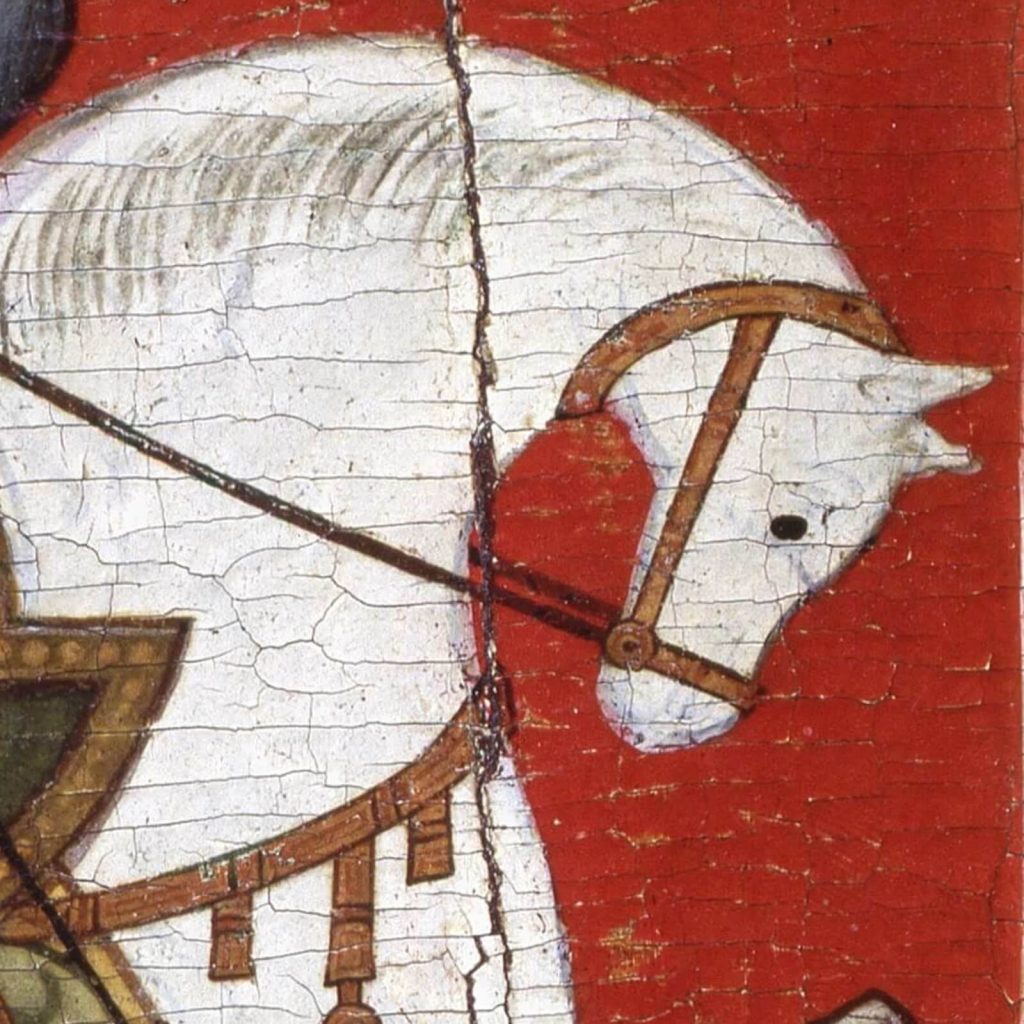Masterpiece Story: Buddha Dated 338
Buddha dated 338 is a masterpiece of Buddhist art and Chinese art with deep historical significance. It exemplifies the early blending of Indian...
James W Singer 14 December 2025
There is a skirmish between the hero and the villain. Fabrics whip about, horse hoofs trample, and a dying scream erupts as Saint George slaughters the dragon. The Christian saint kills the horrible creature as an act of religious zeal and civilization overcoming anarchy. Since the 10th century, Russian artists have been capturing this dramatic tale through countless painted images. One such image, Saint George and the Dragon, painted by an unknown artist, now hangs in the State Russian Museum of Saint Petersburg, Russia. It captures the spiritual energy of the Russian Orthodox Church during the 15th century.

Saint George and the Dragon represents the culmination of artistic development spanning over 1,000 years. In 324 the city of Constantinople, modernly known as Istanbul, was founded as the “New Rome.” It was the capital of the Eastern Christian Roman Empire, known more commonly as Byzantium. The Byzantine Empire was the last bastion of Roman Christian culture as the Western Roman Empire crumbled to invaders. Byzantium was a Christian buffer against Islamic expansion into central and northern Europe, but also acted as an expanding Christian influence on its neighbors. It was from Byzantium that Russia obtained its Orthodox religion, its reverence of icons, and its alphabet through religious influence and conversion. Saint George and the Dragon is one of the many images found in the wide repertoire of Russian Orthodox icons.

The story of the saint was first recorded in the 10th century during the time of the First Crusade (1096–1099). The painting depicts the essence of the tale. The Christian Saint George was inspired to seek out and slaughter the evil Dragon roaming the countryside. The Dragon demanded human sacrifice, like in the ancient Greek tale of Perseus and Andromeda, and it was also attacking a princess. There are definitively pre-Christian origins to the tale of Saint George. However, with the hand of God featured in the upper right corner, this painting takes on Christian morality and religious zeal. Saint George is being blessed by the hand in an act of protection and following God’s will.

Saint George and the Dragon is painted in the late Byzantine style that is harmonious with the Russian Orthodox religion. It features strong patterns as seen in the fluttering cape, firm lines as seen in the dragon’s body, and intense contrasting colors as seen in the horse’s head. These three stylistic elements heighten the legibility of the icon as it would have been seen in its original spatial context.
Originally the icon would have been carried inside a dimly lit church with only flickering candles to illuminate it through the church’s clouds of smoky incense. If the painting’s visual style was more subdued and understated, then its visual impact would be lost in the dark church interior. The painter of Saint George and the Dragon understood that strong patterns, firm lines, and intense colors are necessary if the painting’s audience is to clearly see and understand it. Paintings like Cavaliere d’Arpino’s Perseus Rescuing Andromeda and the Faras Gallery Saint Anne do not have the same visual intensity.

Saint George and the Dragon follows the persistent and conventional vision that the spiritual world is insusceptible to change. The earthly world is in constant flux, but the spiritual world remains static and consistent. It does not change and evolve. It is a constant source of inspiration through its steadfastness. This spiritual outlook is seen in the absence of shadows throughout the painting. There is a slight shading around Saint George’s chin to define his jawline, but there are not the shadows we would associate with a brilliantly lit scene. We would expect shadows painted on the ground beneath the saint and his horse. The dragon would cast a shadow beneath his flailing and dying body. There is a clear lack of shadows because shadows imply time. They are dependent upon the time of day and the location of the sun. Both elements are tied to the earthly world and not the spiritual world. In the spiritual world, everything is illuminated by God’s presence, and it is eternal and timeless. Therefore the painter of Saint George and the Dragon translated this viewpoint by excluding naturalistic shadows.

Many scholars believe this painting is strongly influenced by Andrei Rublev who is considered the master of Russian icons. He lived in the late 14th and early 15th centuries. Therefore depending on when Saint George and the Dragon was painted, the unknown artist could have been a contemporary or in the generation following Rublev. This theory is backed by the use of a white halo surrounding Saint George which was popularized by Andrei Rublev. Prior to the 15th-century halos were depicted more often as outlined circled of delicate gold. In this painting, Saint George definitely has a strong halo that boldly contrasts with the red ochre background.

Saint George and the Dragon is a complex painting that expresses its Byzantine origins through a Russian Orthodox lens. The painting is no longer carried in a dimly lit church but now hangs in the brightly lit State Russian Museum of Saint Petersburg, Russia. This fabulous museum has the world’s largest collection of Russian fine arts with pieces beginning from the 12th century. Saint George and the Dragon may have been created by an unknown artist, but he or she was an artist of talent, spiritual zeal, and vibrancy. It is a masterpiece of medieval Russian Orthodox art.
Helen Gardner, Fred S. Kleiner, and Christin J. Mamiya, Gardner’s Art Through the Ages, 12th ed. Belmont, 2005.
Icon St George and the Dragon. Collections. Russian State Museum [Accessed December 18, 2020].
Lodwick Marcus, The Museum Companion: Understanding Western Art. New York, 2003.
DailyArt Magazine needs your support. Every contribution, however big or small, is very valuable for our future. Thanks to it, we will be able to sustain and grow the Magazine. Thank you for your help!